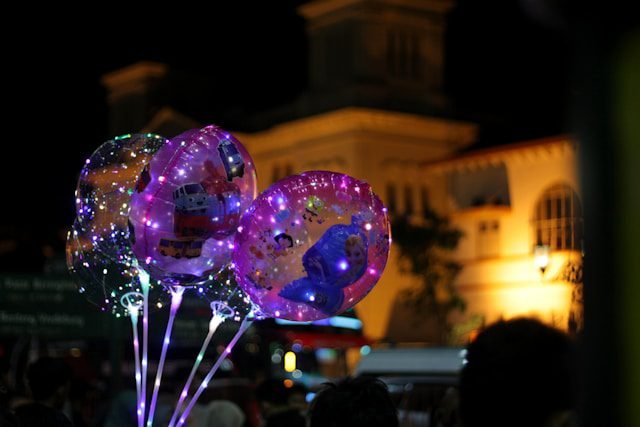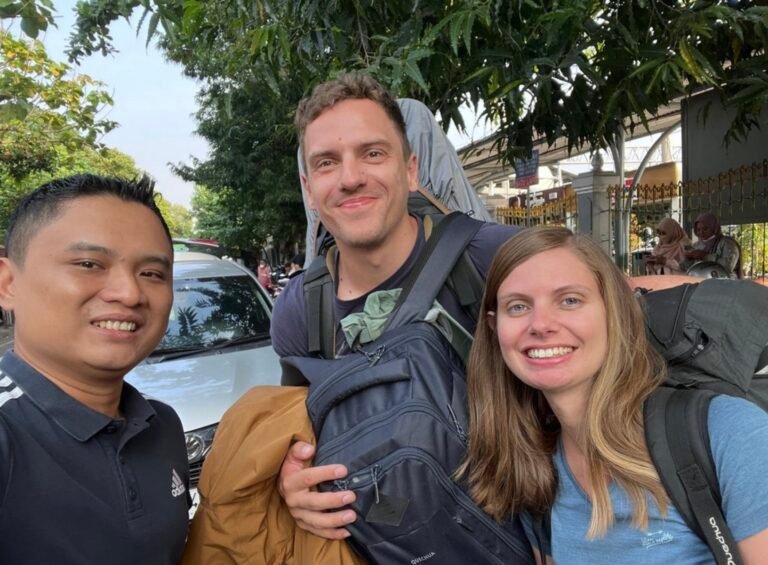Gejog Lesung is a traditional Javanese art form that is practiced in the Surakarta, Klaten, and Yogyakarta regions. This art form, which originated in an agrarian society, is performed with everyday implements like mortars and pestles.
The term “gejog lesung” originates from the Javanese verb “gejog,” which means “to hit or pound,” and “lesung,” which refers to a tool used for pounding rice.
Long wooden sticks are used to create the mortar, which is a long container with a depression in the middle, and the pestle, which is a tool utilized in Gejog Lesung art.
According to wukirsari.bantulkab.go.id, jackfruit or munggur wood are typically used to make mortars. Rural communities used to remove rice from its stalks by rhythmically beating them with a pestle in mortars. Although most people no longer use mortars for pounding, traditional art has managed to retain the mortar’s survival.
Read more: Angkringan Jogja, a Solution for Your Midnight-Time Hunger in Yogyakarta
The History of Gejog Lesung
According to information found on the website kikomunal-indonesia.dgip.go.id, Gejog Lesung is believed to have originated in the ninth century.
Following the rice harvest, the local community comes together in groups to perform the art of Gejog Lesung. Singing, dancing, conversation, and storytelling are incorporated into this activity to express joy and prevent exhaustion.
With time, this practice evolved from being just a method of pounding rice to being a kind of art that the general public looked forward to and enjoyed.
The myths and legends that the locals consider to be ancestral tales are also intrinsic to the history of Gejog Lesung.
Three tales about the beginnings of the gejog lemung art form are reported from the inheritancekultur.kemdikbud.go.id portal.
1. A Tale Told by Dewa Kala Rau
The first tale describes the occurrence of mortar and is told by Dewa Kala Rau, also known as Lembu Culung.
According to legend, the mortar is an imitation or embodiment of the stomach or bloat portion of the god Kala Rau, also known as the Culung Ox.
This is because to the fact that the mortar’s historical design represents multiple body parts of the enormous human, including the mustaka, or head, the jangga, or neck, the jaja, or chest, the stomach, the tribe, or feet, and the kepet, or fins.
When hit, the head and legs produce the sounds “dhug” and “theg” and are not hollow.
Next, loud noises are produced from the neck, chest, and stomach, but at various frequencies, creating a high- and low-pitched sound impression.
2. The Story of Bandung Bondowoso and Roro Jonggrang
The second narrative, about Bandung Bondowoso and Roro Jonggrang, describes how a temple had to be built in a single night.
In order for Bandung Bondowoso to propose to Roro Jonggrang at that time, he was required to construct a thousand temples in a single night as proof of his supernatural abilities.
In order to stop Bandung Bondowoso’s plans, Roro Jonggrang tells the villagers’ farmers to play gejog lemung music in the middle of the night, causing the chickens to crow as a signal that it is daylight.
3. Mataram Ketoprak
The evolution of Mataram ketoprak theatrical art is the subject of the second story.
This all began with a theatrical production that Prince Wreksadiningrat produced in Surakarta’s Kepatihan, complete with gejog lemung music.
Thus, when this dramatic form first emerged, it was frequently called ketoprak lemung. Then, in the tenth century, this ketoprak art made its way to Yogyakarta, where it quickly evolved into the Mataram ketoprak, complete with gamelan music accompaniment and slendro and pelog tunings.
Read more: Enjoying the Sunset in the Yogyakarta’s One and Only Dam of Waduk Sermo
How to Play Gejog Lesung Instruments
Gejog Lesung is a percussion musical instrument that is played by repeatedly striking it with a pestle to create a loud, repetitive sound.
Because it is a musical instrument, it is struck with a wooden stick known as a pestle or, more commonly, an antan (pounding tool). the mortar’s shape, which can range from having a single long hole to having many holes.
Four to five people typically play with one mortar. The sound or music created will be livelier the more musicians there are. The “kothek-an” fundamental idea of the gejog mortar game is built on interlocking punch patterns.
Expression of the Agrarian Community’s Happiness
After harvest, rural farmers would show their excitement, which gave rise to the art of gejog dimples.
Farmers were the ones who created music and rudimentary movements, which also evolved and changed. It is more expressive and visually appealing as performing arts because of the inventive touches added by rural musicians.
This art is growing quickly in Yogyakarta, particularly in the regencies of Bantul (focused in Imogiri), Gunungkidul (centered in Panggang, Giriharjo, Panggang District), Kulon Progo, and Sleman.
When do they play Gejog Lesung?
Since ancient times, when the mortar was the sole implement available for pounding rice, agricultural communities—including those in Yogyakarta, where the game is known as “gejog mortar”—have played the musical version of mortar.
Gejog Lesung game is a way for farmers to thank Dewi Sri, who is revered as the Goddess of Rice, and to express their happiness over the bountiful harvest of rice.
The farmers play with the mortar and sing Javanese songs either while pounding rice or after.
Wayang musician Ki Nartosabdo captured the thrill of the community with the lively sound of the mortar and the delight of the farmers working together to pound rice in his song “Lesung Jumengglung,” which he wrote in
Gejog Lesung at The Other Cities
As it is renowned in Yogyakarta society, the performing art known as “gejog dimples” appears to have spread to other parts of Indonesia, particularly the agricultural provinces.The names that are used, meanwhile, differ depending on the regional tongue.
The name “Gejog Lesung” is also used in Klaten Regency, Central Java, which is still next to Yogyakarta Special Region.
“Gejlok Lesung” is the name given to it in Kendal Regency, Central Java. It is referred to as “Lisung” in West Java, “Lesung Art” in East Java, “Gandang Lasuang” in West Sumatra, and “Padéndang Ogi” music by the Bugis in Wajo, South Sulawesi.
Embark on an unforgettable journey to Java, Indonesia, where a world of wonders awaits! Java, the heart and soul of Indonesia, is a treasure trove of diverse landscapes, rich cultural heritage, and breathtaking experiences.
Find out the package now from Yogyakarta Tours:
- 1 Day Tour:
- Multidays Tours


![Easy Adventure from Yogyakarta Airport to Jomblang Cave [Transportation Guide] 2 - Goajomblang.com Yogyakarta AirPort to Jomblang Cave](https://yogyakartatour.com/wp-content/uploads/2024/01/Screenshot-2024-01-15-200553.jpg)




